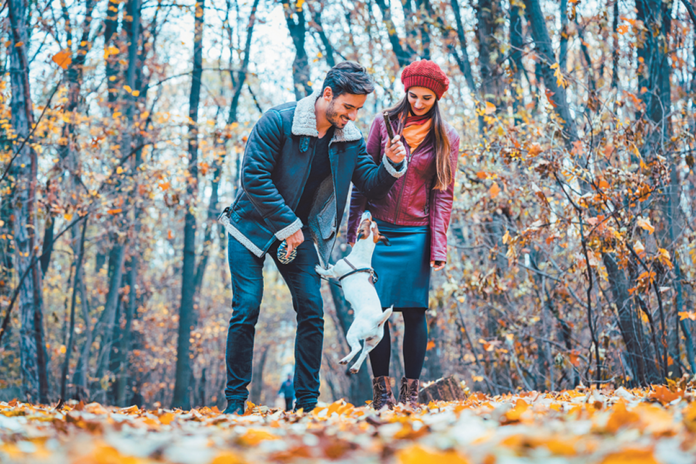Teaching your dog to refrain from jumping up on people is not one of the easier behavior training tasks. One reason is that your pet is usually exuberant while doing it — she’s showing that she really likes the person she’s jumping on and is eager to engage. It can be hard to say no when your dog is happy and exhibiting positive feelings.
In addition, people tend to let their dogs jump sometimes, and dogs are terrible at “sometimes.” They don’t get that it’s okay to jump on you when you’re in the mood but not when you aren’t; or that it’s fine to jump on the teenager next door but not the kid’s grandmother. It has to be all-or-nothing.
The inconsistency makes it even harder for a dog to learn. It’ll take her a while to understand that it’s not going to work “here and there.” She could easily spend a few weeks thinking she should just keep trying before she gives up. That’s why patience is key here.
The four-step training plan to end the jumping
As with many other elements of training, teaching a new behavior can be broken down into a four-point sequence.
- When your dog starts jumping on you, say the word “Off.” (“Down” means “lie down,” as in “put your chest on the floor.”) Say it once and only once. Otherwise, your will have taught your dog that it’s a word she can ignore. And she will have taught you to act like a parrot.
2. Turn to stone and do absolutely nothing in response to your dog’s efforts. Not reacting to unwanted behavior is always the hardest part of training, particularly when a dog is pushing her full body weight against you — over and over. But reacting only teaches your pet that there’s something in it for her, even if it’s a negative reaction; continually pushing her off and waving your arms make it clear to her that she has been successful at getting your attention. It becomes a game. Instead, keep your arms folded and your eyes averted. You may have to stay that way for as long as 3 minutes.
Note: If you are a 110-pound woman and your dog is an 85-pound Lab mix, you will have to use a head halter. When your dog jumps, apply gentle, sustained pressure to the lead with a soft tug, which will activate pressure points on the nose and neck that your dog will immediately understand to mean that you have control over her. Hold the lead lightly, just enough to apply the necessary tension for delivering a biologically appropriate signal that makes her stop. The dog should not feel like she is being punched in the throat.
3. The dog stops jumping, if only to regain her bearing. Hurray — your patience paid off!
4. Immediately reward the desired behavior with a treat to die for, like a fingernail’s worth of beef or chicken. And tell your pal how proud of her you are. Have the treat with you. If you need to walk to the kitchen to get it, your dog will think that every time she stops jumping, the result is that you walk to the kitchen. She won’t be able to sequence the activities.
That’s it. If your dog is a frequent jumper, you are going to have to employ the training a lot over the course of a few weeks until the lesson really sinks in. It takes time to give up something that has been so much fun. But if you stick with it, your dog will get it that keeping all her paws on the ground brings the best rewards.





